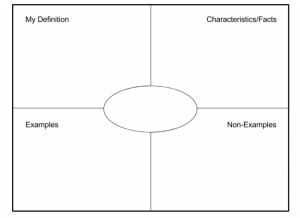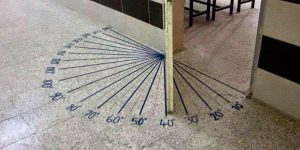Over the summer break there have been a number of teachers asking each other for advice regarding setting up rooms, what concepts or books to focus on, or discussing what themes might interest their new class of students. These questions are all valid and show that teachers are keen to hook students into learning from the very beginning of year. What may be missed though, is the fact that most of these questions should be asked of the students themselves once classes start, instead of predicting now what students might need or be inspired by.
“There is strong support for the notion that ‘engaged learning occurs when the lives, knowledge, interests, bodies and energies of young people are at the centre of the classroom and school.”
Thomson & Comber 2003, p. 305
The focus here is on engaging students through their interests. Take the time during the first few weeks of school to build relationships, finding out what they like doing (outside of school) and what they would like to learn about (inside of school). Give some of the control over to the students. If you are wondering what colours to use in your room or what themes might inspire the students, ask them. Positive and welcoming learning environments start with you, the teacher.
“Highly-decorated classrooms are more of a distraction than an aid to learning. This has been found to be particularly so for children in the early primary years, and children with special learning needs.”
Decoration or distraction: the aesthetics of classrooms matter, but learning matters more
Last year I read a great article that I think is helpful in setting up your room at the beginning of the year. There were many practices in the article that I had done in the past (like paint a whole window like van Gogh’s Irises) that maybe didn’t have the learning effect I thought! As much as we as teachers love buying new things, organising and laminating, that’s not what has the greatest impact on our students’ learning. What impacts students and involves them in their learning is, not surprisingly, themselves!
“The displays children actually notice and interact with most of all are those of their own work.”
Decoration or distraction: the aesthetics of classrooms matter, but learning matters more
Student choice and voice in the classroom is what will hook students, being interested in them and in their interests it what builds a classroom culture where student-centred learning can thrive. The phrase ‘student-centred’ is often used in schools, in research and in program documents but what does it really mean and what does it look like in the mathematics classroom?
In AITSL’s publication, Literature review: Student-centred schools make the difference, they reference innovative classroom ideas from researcher Rosalyn Black from Deakin university:
“Black (2006, p. 4) further explains the common characteristics of student-centred
education, indicating that:
- It personalises teaching and learning to meet individual student needs
- It emphasises building meaning and understanding rather than
completing tasks - It is based on a challenging curriculum connected to students’ lives
- It enables the student to be an active participant in his or her learning
- It encourages cooperation between students
- It is guided by rather than centred around the teacher
- It connects learning to the wider community outside the school.”
These are the questions we need to be focusing on at this time of the year:
- What practices should I have in place to make learning personalised?
- What flexible grouping strategies am I planning to use to ensure students are active participants and are encouraged to cooperate?
- What aspects of the curriculum are open to make meaningful connections to my students’ wider community contexts?
“In considering the intended learning, teachers will make decisions about the sequence, the emphasis to be given to particular areas of content, and any adjustments required based on the needs, interests and abilities of their students.”
NSW K-6 Mathematics syllabus, page 32
I love quoting this part of the Mathematics syllabus as it encourages teachers to be flexible with how we present content to students and states that it is our responsibility to include student interests in these decisions. It implies that we need to talk to our students about their interests and make use of them in an educational context as well as a wellbeing context. So although not all student-created work is ‘pretty’ or not all the students in your class like the same things, it’s what they pay attention to, it’s what helps make connections to prior learning and it’s what needs to be the focus of your classroom.
Here are my top tips for using student-created work in the mathematics classroom:
- Create Frayer Charts of mathematical concepts or ideas at the beginning of a new sequence of learning and have them visible for the duration of the learning cycle
- Instead of buying commercial posters – for example, have students create their own 3D objects (from paper, cardboard, playdough, nets) take photos of them, then have the students make them into posters for the room
- Designate a space on your wall as a ‘Mathematical Inspiration’ wall, leave it blank and have students find interesting facts, images or pose problems for other students to solve (recreate and add to this often)
- Have students critique the room (a bit like the judges on The Block) what they would keep and what they would change and why (this is not specifically mathematical but allows students some choice and control over the environment)
- Allow students to ‘enhance’ the mathematical features of your classroom, for example, drawing the degrees along the floor near the door like a protractor, creating their own height chart on the wall and anything else they notice
- Hang students’ mathematical work, like you would with English stories, allow students to draft and re-draft their problem solving solutions, this provides an audience for their work
- Have a whole-class journal (scrapbook) and add someone’s work to it each day or have a student write in it, or jointly construct a reflection. The book should be available for students to read and also be used at the beginning of lessons to link to “what we did last time”
If you are anything like me you have have spent a considerable amount of your holidays cleaning cupboards! You may have even taken it a step further and read Marie Kondo’s book The life-changing magic of tidying up (or at least watched her show on Netflix). Maybe we need to bring this thinking into the classroom as well to transform not only our rooms, but our, and our students’, ways of thinking.
Making feedback visible to students on their mathematical ideas and thinking. K/1S know what they’ve done well and where to next. #BNL @EStothard @EnglefieldLee @dizdarm @SteveHarrisDEL @mccallumtp @TregoningMich @GlenrockNetwork pic.twitter.com/egjIrb4mrH
— Wiripaang Public School (@wiripaang) November 16, 2018
References
Black, R 2006, ‘Overcoming disadvantage through the innovative classroom’, paper presented at the Australian Association of Researchers in Education Conference, Adelaide
https://www.edutopia.org/blog/decrease-classroom-clutter-increase-creativity-erin-klein
Decoration or distraction: the aesthetics of classrooms matter, but learning matters more (2017, Oct 2) Retrieved from http://theconversation.com/decoration-or-distraction-the-aesthetics-of-classrooms-matter-but-learning-matters-more-83418
Harris, J, Spina, N, Ehrich, L & Smeed, J 2013, Literature review: Student-centred schools make the difference, Australian Institute for Teaching and School Leadership, Melbourne. Retrieved from https://www.aitsl.edu.au/docs/default-source/default-document-library/literature-review—student-centred-schools-make-the-differenceba338e91b1e86477b58fff00006709da.pdf?sfvrsn=fadbea3c_0
Thomson, P & Comber, B 2003, ‘Deficient ‘disadvantaged students’ or media savvy meaning makers? Engaging new metaphors for redesigning classrooms and pedagogies’, McGill Journal of Education, vol. 38, no. 2, pp. 305–327.







